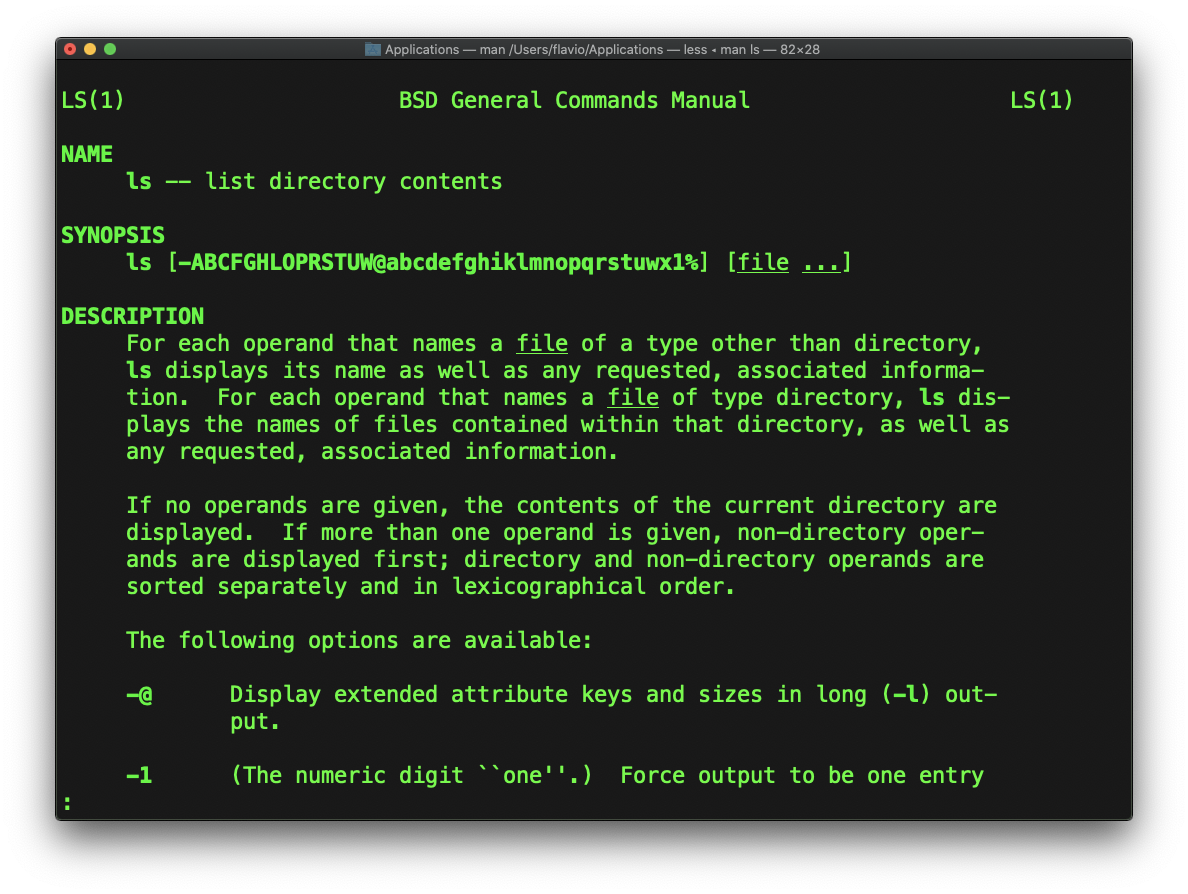Linux commands: man
A quick guide to the `man` command, used to learn how to use command line commands
Every time I don’t know how to use a command, I type man <command> to get the manual:

This is a man (from manual) page. Man pages are an essential tool to learn, as a developer. They contain so much information that sometimes it’s almost too much.
The above screenshot is just 1 of 14 screens of explanation for the ls command.
Man pages are diveded into 7 different groups, identified by a number:
1is user commands2is kernel system calls3is C library functions4is devices5is files formats and filesystems6is games7is miscellaneous commands, conventions and overviews8is superuser and system administrator commands
Most of the times when I’m in need to learn a command quickly I use this site called tldr pages: https://tldr.sh/. It’s a command you can install, then you run it like this: tldr <command>, which gives you a very quick overview of a command, with some handy examples of common usage scenarios:

This is not a substitute for man, but a handy tool to avoid losing yourself in the huge amount of information present in a man page. Then you can use the man page to explore all the different options and parameters you can use on a command.
The
mancommand works on Linux, macOS, WSL, and anywhere you have a UNIX environment
download all my books for free
- javascript handbook
- typescript handbook
- css handbook
- node.js handbook
- astro handbook
- html handbook
- next.js pages router handbook
- alpine.js handbook
- htmx handbook
- react handbook
- sql handbook
- git cheat sheet
- laravel handbook
- express handbook
- swift handbook
- go handbook
- php handbook
- python handbook
- cli handbook
- c handbook
subscribe to my newsletter to get them
Terms: by subscribing to the newsletter you agree the following terms and conditions and privacy policy. The aim of the newsletter is to keep you up to date about new tutorials, new book releases or courses organized by Flavio. If you wish to unsubscribe from the newsletter, you can click the unsubscribe link that's present at the bottom of each email, anytime. I will not communicate/spread/publish or otherwise give away your address. Your email address is the only personal information collected, and it's only collected for the primary purpose of keeping you informed through the newsletter. It's stored in a secure server based in the EU. You can contact Flavio by emailing [email protected]. These terms and conditions are governed by the laws in force in Italy and you unconditionally submit to the jurisdiction of the courts of Italy.